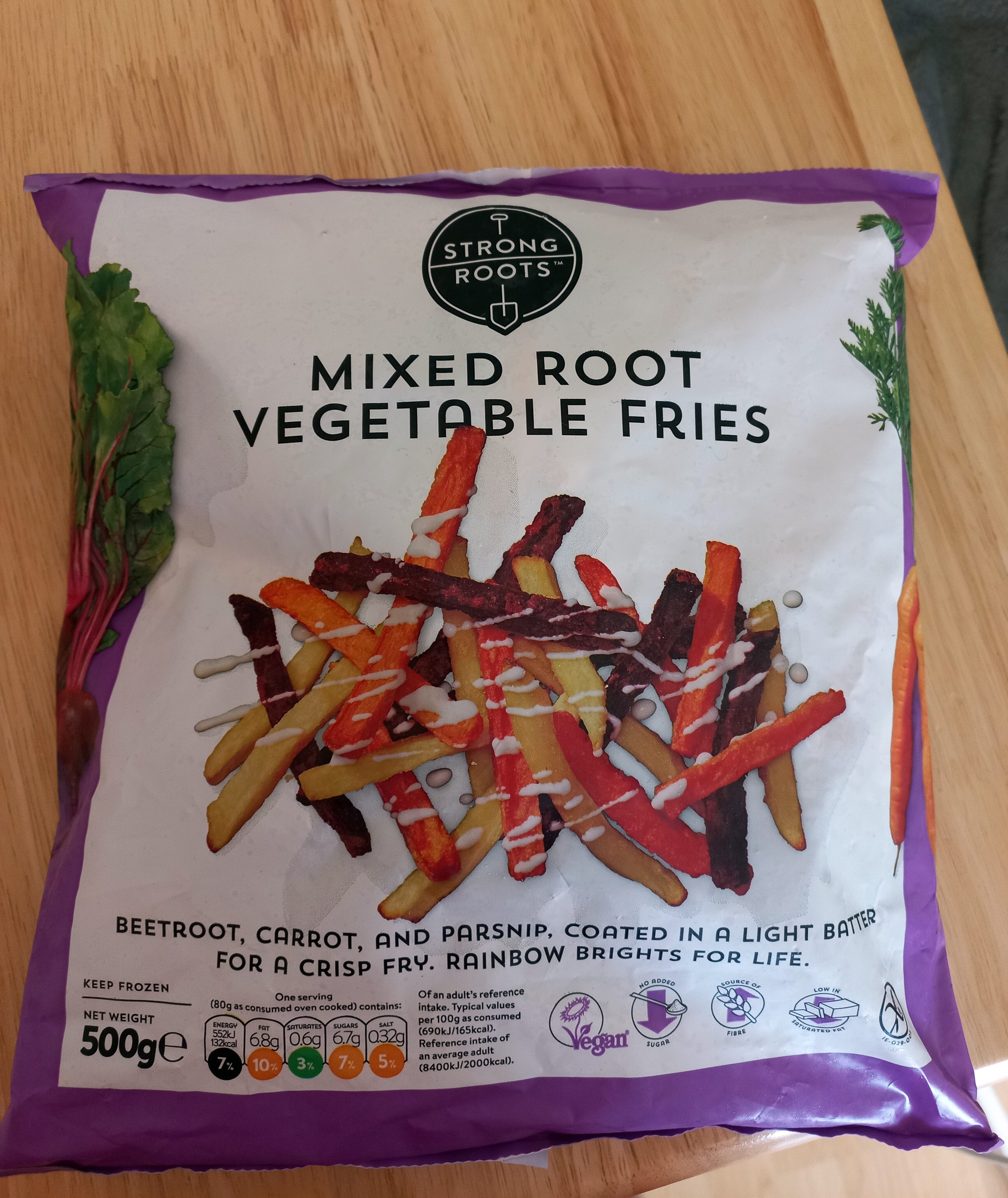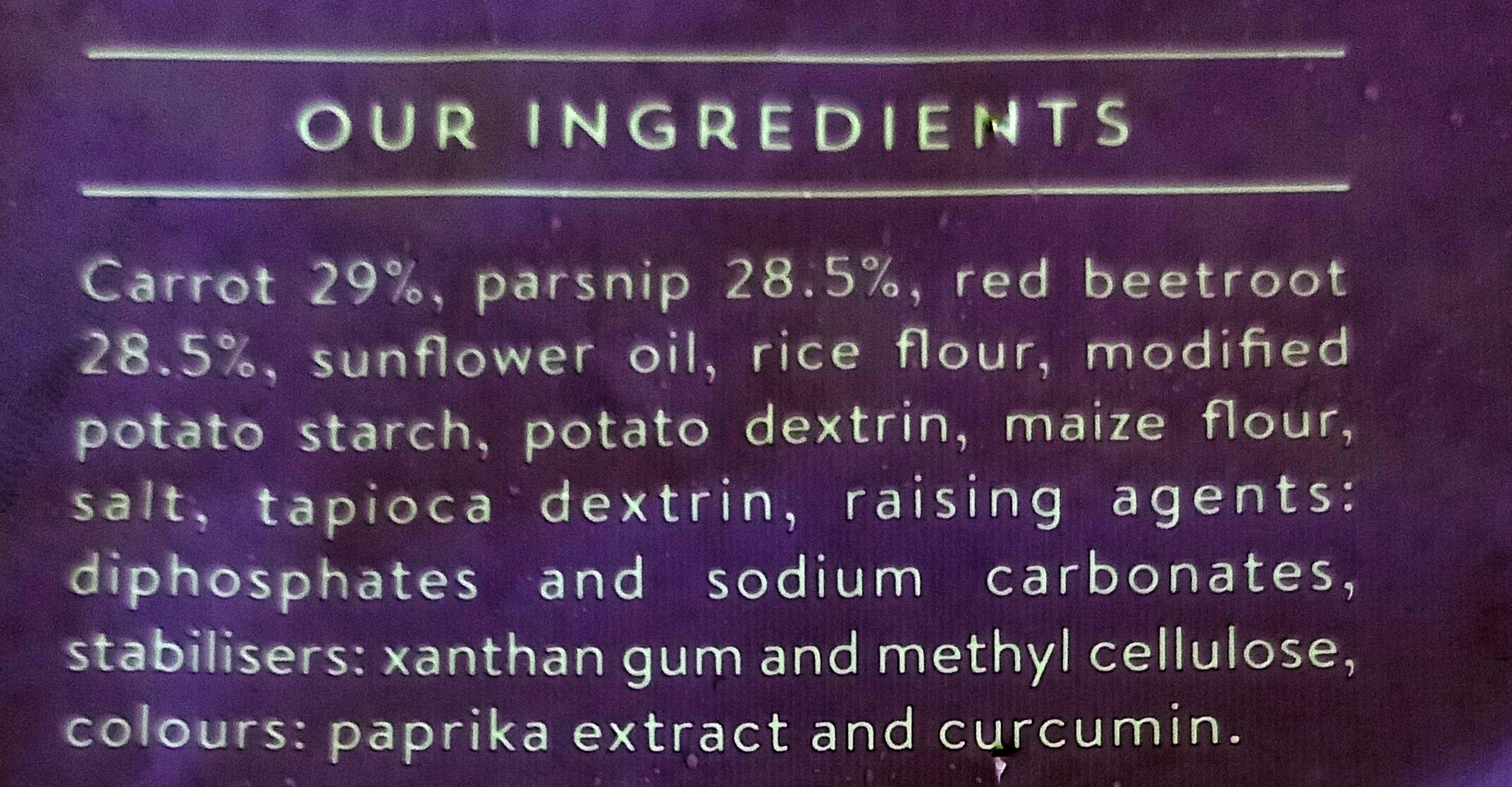Mixed root vegetable fries - Strong Roots - 500 g
This product page is not complete. You can help to complete it by editing it and adding more data from the photos we have, or by taking more photos using the app for Android or iPhone/iPad. Thank you!
×
Barcode: 5391528180127 (EAN / EAN-13)
Ainm coitianta: Individually quick frozen beetroot, carrot and parsnip coated in a rice flour batter
Quantity: 500 g
Packaging: en:Mixed plastic-packet
Brandaí: Strong Roots
Catagóirí: en:Plant-based foods and beverages, en:Plant-based foods, en:Fruits and vegetables based foods, en:Vegetables based foods, en:Frozen foods, en:Vegetables, en:Frozen plant-based foods, en:Frozen vegetables, en:Frozen plant-based foods mixes, en:Mixed vegetables, en:Frozen mixed vegetables
Labels, certifications, awards:
en:No gluten, en:Vegetarian, Source of fibre, en:Vegan, Low saturated fat, No added sugar, The Vegan Society
Link to the product page on the official site of the producer: https://strongroots.com/en-gb/products/m...
Siopaí: Tesco
Country: An Ríocht Aontaithe
Matching with your preferences
Environment
Carbon footprint
Packaging
Transportation
Report a problem
Data sources
Product added on ag kiliweb
Last edit of product page on ag alia.
Product page also edited by foodvisor, inf, itsjustruby, roboto-app, swipe-studio, yuka.YTQwY0xvMVF2OGtEdWRzNTFDM2YzZmRYMTVxcFREdU9PczRhSVE9PQ, yuka.YUlJWlB2OHRvZVV4eE04Z3dRaUUxb2hXbnBXeWZrV2JjL2cvSUE9PQ.










